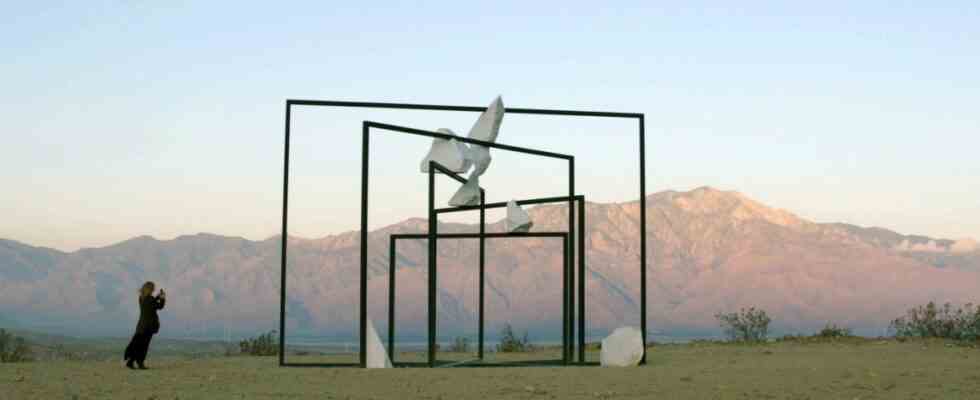The “market for outdoor sculptures” is growing the fastest, that’s why Alicja Kwade produces the goods in piecework. Kwade came to Berlin when he was 19 to study art. Now she is a superstar and employs 20 people and several forklifts in her workshop. Their steel constructions, on which heavy chunks of marble sit, are in such demand with international collectors that they can hardly keep up with the production.
Kwade is one of three artists participating in the Arte series “Is that art?” to be introduced. But the four parts are only marginally about art. Instead, the makers of the series, Silke Hohmann and Felix von Boehm, go into the back rooms of the company, where prices, money and market strategies are negotiated. The artists, auctioneers, gallerists, and museum people she interviews seem almost grateful to finally be able to talk about the white elephant, especially Kwade, who obviously enjoys showing people behind the scenes of her success.
Performances that are lavish like Cirque du Soleil spectacles
We learn how the Berlin dealer Johann König bids on works by his artists at auctions to support their prices. That large sculptures like Kwade’s should never cost less than a million dollars. And how Kwade is forced to produce constantly to keep her big business running. Johann König describes her as a “responsible entrepreneur”.
This is also Anne Imhof, who won the Golden Lion at the Venice Biennale in 2017 and then had to “professionalize quickly”. Unlike Kwade, she strives for the aura of the unfathomable artist. Thrown onto a grotesque leather sofa, with children’s sunglasses and in a Berlin fuck-off outfit, she gives Silke Hohmann a snarky answer. But even she can only realize her performances, which are as elaborate as Cirque du Soleil spectacles, with an overflowing staff of employees. And she too has to make compromises: Without the objects she sells to collectors, the performances could not be financed.
Dior also loves Amoako Boafo
Even more than Imhof and Kwade, the third artist, Amoako Boafo, is struggling with his success. Born in 1984, the painter has a different marketing history to Kwade and Imhof, and not just because he is from Accra, Ghana: he was successfully marketing his paintings on Instagram before the western art machine discovered him. Today his works fetch six-figure sums at auction. Boafo feels the market threatening to eat him up. “I’ve been asked to produce canvases in certain sizes!” he moans. Dior also loves him and has ordered motifs for handbags from him. “If it’s just a question of serving a request, I’m out,” he bravely announces. Will he still be able to afford the pimped G-Class that he rumbles along Accra’s dusty roads?
One likes to be taken along by Silke Hohmann when she visits Art Basel, the studios, Christie’s and the Biennale. However, it is obvious that Hohmann is well acquainted with a number of her protagonists and that she herself belongs to the system that she wants to reveal here. She obviously shows polite consideration for those she is talking to and always knows more than she says. So the series moves somewhat smugly between cautious criticism and involuntary affirmation.
“Is that art?”. Arte, May 22, 12:10 p.m., as well as in the Arte media library.

